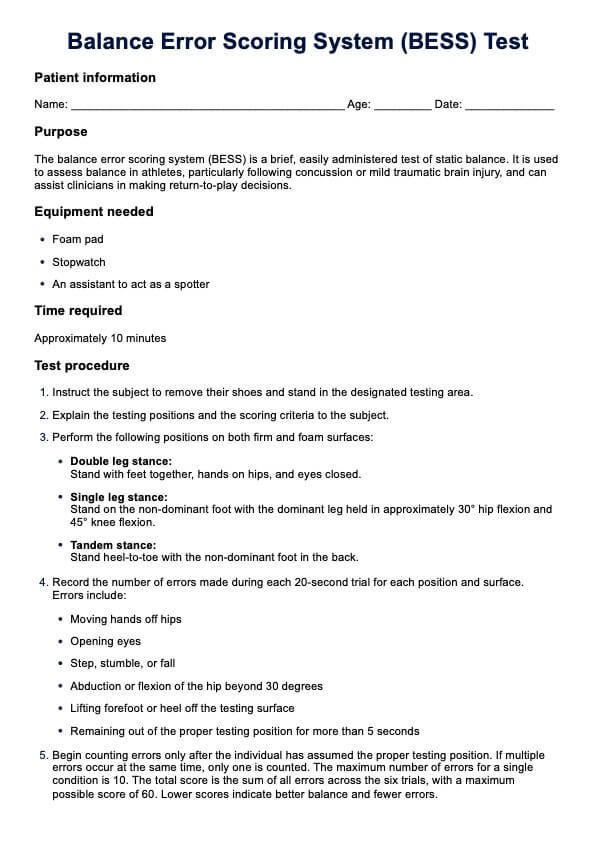The BESS is used to assess static balance in individuals, particularly athletes, following concussions or mild traumatic brain injuries. It helps clinicians determine readiness to return to play and evaluate postural stability.

Balance Error Scoring System
Standardize testing, save time, and ensure accurate records for reliable postural stability evaluations with our Balance Error Scoring System.
Balance Error Scoring System Template
Commonly asked questions
The BESS takes approximately 10 minutes to administer. It involves performing balance tests on different stances and surfaces while recording the results, which measure the number of balance errors.
Yes, the BESS can assess balance deficits and fatigue in healthy young athletes. Studies involving uninjured NCAA baseball players, healthy young adults, and high school athletes have shown its relevance in evaluating the balance and fatigue of this specific demographic.
EHR and practice management software
Get started for free
*No credit card required
Free
$0/usd
Unlimited clients
Telehealth
1GB of storage
Client portal text
Automated billing and online payments











